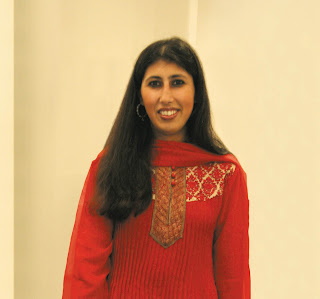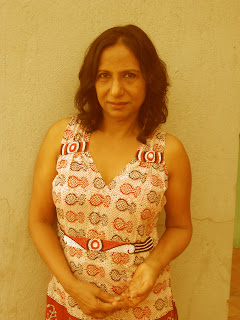a1000yoga is a yoga studio that not only teaches the ancient art of yoga but also makes it interesting and upbeat.
It is all calm at a1000yoga studio. A stroll down the 1st cross, near Jyothi Nivas College, leads you to this oasis of bliss, worlds apart from the cacophony outside. The studio exudes a stillness, a sense of calm and an awareness that engulf you even as you step across its threshold.
Pradeep Govind G, the founder of a1000yoga, was all of seven years old when he first got a taste of yoga. Under his father’s tutelage he learnt the classical asanas and later devoted himself to studying yoga full time. A graduate from Bihar Yoga Bharathi in M.Sc. Applied Yogic Science with a university gold medal, Pradeep has been teaching yoga in Bangalore, Hyderabad, Bangkok, Kuala Lumpur, Penang and Colombo. Unassuming and nonchalant about his expertise, Pradeep is completely in sync with what he teaches. It is perhaps an indication of the humility and peacefulness which comes from years of practicing this art.
It is all calm at a1000yoga studio. A stroll down the 1st cross, near Jyothi Nivas College, leads you to this oasis of bliss, worlds apart from the cacophony outside. The studio exudes a stillness, a sense of calm and an awareness that engulf you even as you step across its threshold.
Pradeep Govind G, the founder of a1000yoga, was all of seven years old when he first got a taste of yoga. Under his father’s tutelage he learnt the classical asanas and later devoted himself to studying yoga full time. A graduate from Bihar Yoga Bharathi in M.Sc. Applied Yogic Science with a university gold medal, Pradeep has been teaching yoga in Bangalore, Hyderabad, Bangkok, Kuala Lumpur, Penang and Colombo. Unassuming and nonchalant about his expertise, Pradeep is completely in sync with what he teaches. It is perhaps an indication of the humility and peacefulness which comes from years of practicing this art.
 |
| a1000yoga studio |
The need for yoga could not have been greater than it is now. Unlike the 60s generation that relied on good old home chores and leisurely walks, the last few generations need a much more centred and holistic approach where health is concerned.
Awareness is the key and most people today are high on fitness regimes, health food and fads. This growing want has given rise to gyms, alternate healing, spas and massage centers offering care for not just the body but the soul as well.
At a1000yoga studio, the instructors themselves are practicing ‘yogis’, adhering to certain tenets and norms. They take into consideration varying aspects like the doshas or the inherent physiological persona of an individual before recommending the best yogic course for them.
Awareness is the key and most people today are high on fitness regimes, health food and fads. This growing want has given rise to gyms, alternate healing, spas and massage centers offering care for not just the body but the soul as well.
At a1000yoga studio, the instructors themselves are practicing ‘yogis’, adhering to certain tenets and norms. They take into consideration varying aspects like the doshas or the inherent physiological persona of an individual before recommending the best yogic course for them.
 |
| a1000yoga studio |
The highlight of this studio is ‘Hot Yoga’, a sinuous sequence of asanas that is practiced in a heated studio of 40 degrees Celsius. If that is too hot to handle, you could try ‘Power Vinyasa’, a flow based session with a well-choreographed sequence of asanas. Busy executives and go-getters can get the most they can out of ‘Corporate Yoga’. Or one can get their daily dose of this centuries-old discipline through the contemporary ‘Power Yoga’ or the rigorous ‘Iyengar Yoga’.
The studio has also brought in a qualified baby sitter to mind children while their parents work out, and one can breathe easy without worrying about having to rush back home.
Its unique name is drawn from the Sahasrara chakra which is represented by a 1000 petal lotus and is also an indication of the various styles of yoga and schools of yoga that are taught at the studio. Apart from the regular classes, Pradeep also holds workshops and will be hosting an International Yoga Teachers training in January 2012. You can reach Pradeep on pradeep@a1000yoga.com.
By Dolly D N/ Raintree Media Features/ www.raintreemedia.com
Read the story on the Goa Herald on the link below:
The studio has also brought in a qualified baby sitter to mind children while their parents work out, and one can breathe easy without worrying about having to rush back home.
Its unique name is drawn from the Sahasrara chakra which is represented by a 1000 petal lotus and is also an indication of the various styles of yoga and schools of yoga that are taught at the studio. Apart from the regular classes, Pradeep also holds workshops and will be hosting an International Yoga Teachers training in January 2012. You can reach Pradeep on pradeep@a1000yoga.com.
By Dolly D N/ Raintree Media Features/ www.raintreemedia.com
Read the story on the Goa Herald on the link below:












































